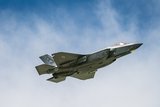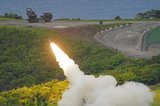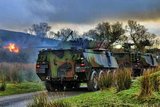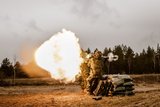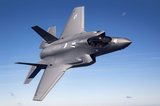PAS 2011: First HMSS for RAF
Royal Air Force (RAF) 'frontline' squadrons will receive their first tranche of the Helmet Mounted Sight System (HMSS) by the end of the year, officials at BAE Systems have declared.
According to BAE Systems combat air chief test pilot Mark Bowman, the first RAF Typhoon squadrons will receive the helmet systems although he could not specify, which units in particular would benefit.
Currently, the RAF's 17 Sqn Test and Evaluation Squadron, which is based out of RAF Coningsby and is equipped with a number of two-seat Typhoons and accompanying HMSS, is developing tactics, techniques and procedures and operational doctrine for the systems.
'[HMSS] is being tactically developed by 17 Sqn as we speak although it is working with a raft of other issues,' Bowman described while referring to the squadron's assistance to ongoing operations in Libya.
Pondering where the system sits in 17 Sqn's priority list, he continued: 'From what I gather, certainly [HMSS] will be used [for frontline units] this year.' He added that the helmets would also be delivered to international customers alongside Typhoon aircraft.
However, Bowman admitted that 17 Sqn was currently using night vision equipment in conjunction with the HMSS as an 'interim solution' and described aspirations for a progressive upgrade programme to reach a full integrated capability: 'There's a clear upgrade path there and great economies of scale to be had and an aspiration to have any pilot starting in the air force, wherever in the world, to have something like this helmet although maybe not in its full capability,' Bowman said.
Looking ahead, Bowman outlined his expectations for the introduction of additional imagery capabilities covering different brackets of the EO/IR spectrum. 'We are actively looking at what we can do to upgrade symbology to help the pilot and are already getting feedback on what the pilot sees in front of him,' he continued adding that this could include overlays of FLIR and image intensification technology.
Finally, Bowman conceded that there were potential restraints to any upgrades and cited technology maturity as a concern. 'We need high definition, resolution and low latency [capabilities] but we are talking a number of years as opposed to decades,' he asserted.
More from Defence Notes
-
![How might European countries look to tackle drone incursions?]()
How might European countries look to tackle drone incursions?
Disruption of infrastructure in Europe, whether by cyberattack, physical damage to pipelines or uncrewed aerial vehicles flying over major airports, as has happened more recently, is on the rise. What is the most effective way of countering the aerial aspect of this not-so-open warfare?
-
![Taiwan approved for $11 billion weapon purchase from US]()
Taiwan approved for $11 billion weapon purchase from US
The US State Department’s approval of a multi-billion-dollar sale of weapons to Taiwan includes tactical mission networks equipment, uncrewed aerial systems, artillery rocket systems and self-propelled howitzers as well as anti-tank guided missiles.
-
![Ireland spells out $2.3 billion shopping list in five-year defence spending plan]()
Ireland spells out $2.3 billion shopping list in five-year defence spending plan
Ireland’s multi-annual investment in capital defence spending is set to rise from €300m in 2026 to €360m in 2029–2030 with major upgrades across land, air, maritime and cyber domains.
-
![Canada to deepen integration of multi-domain capabilities to strengthen its defences]()
Canada to deepen integration of multi-domain capabilities to strengthen its defences
The Canadian Department of National Defence has created new organisations to manage the procurement and integration of all-domain solutions and allocated US$258.33 million to strengthen production capacities.
-
![US National Security Strategy prioritises advanced military capabilities and national industry]()
US National Security Strategy prioritises advanced military capabilities and national industry
The 2025 NSS has emphasised investment in the US nuclear and air defence inventory and national industry, but it leaves multiple unanswered questions on how the White House will implement this approach.
-
![Canada set to look away from its neighbour and across the Atlantic for partners]()
Canada set to look away from its neighbour and across the Atlantic for partners
While non-EU UK struggles to join the Security Action for Europe initiative, which provides loans for defence programmes, Canada has become the first country outside Europe to get access – and did so for a nominal fee.









